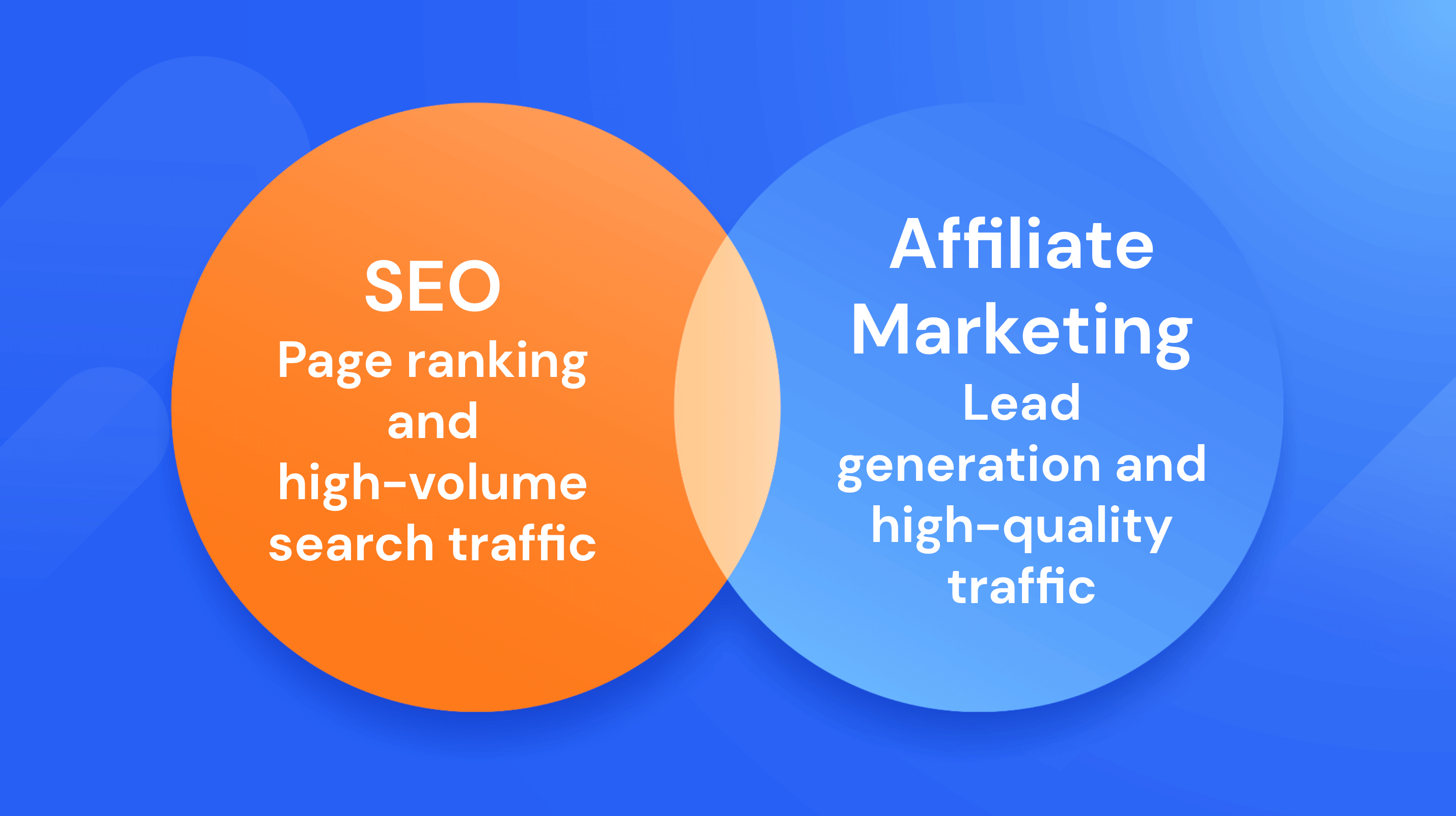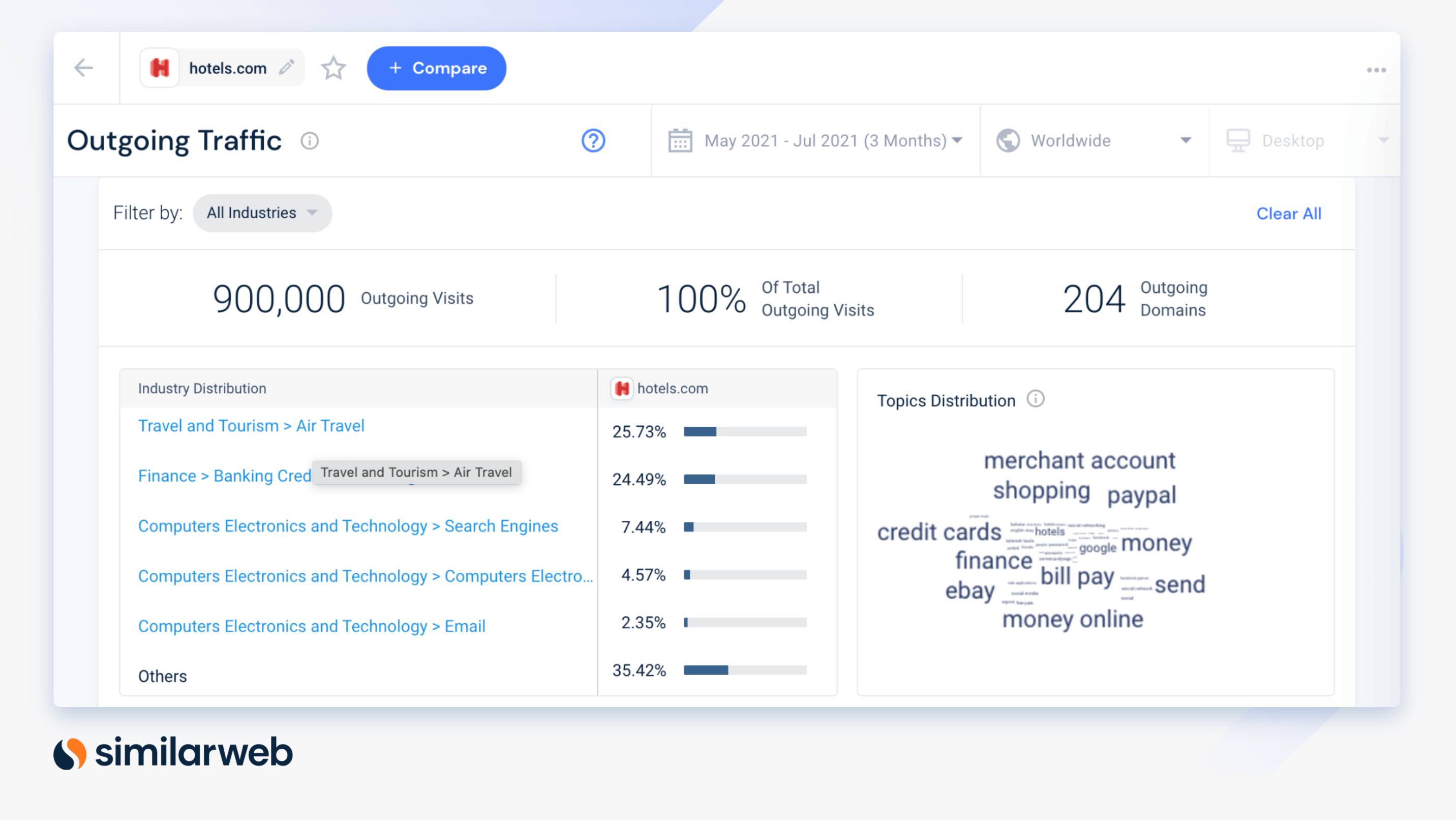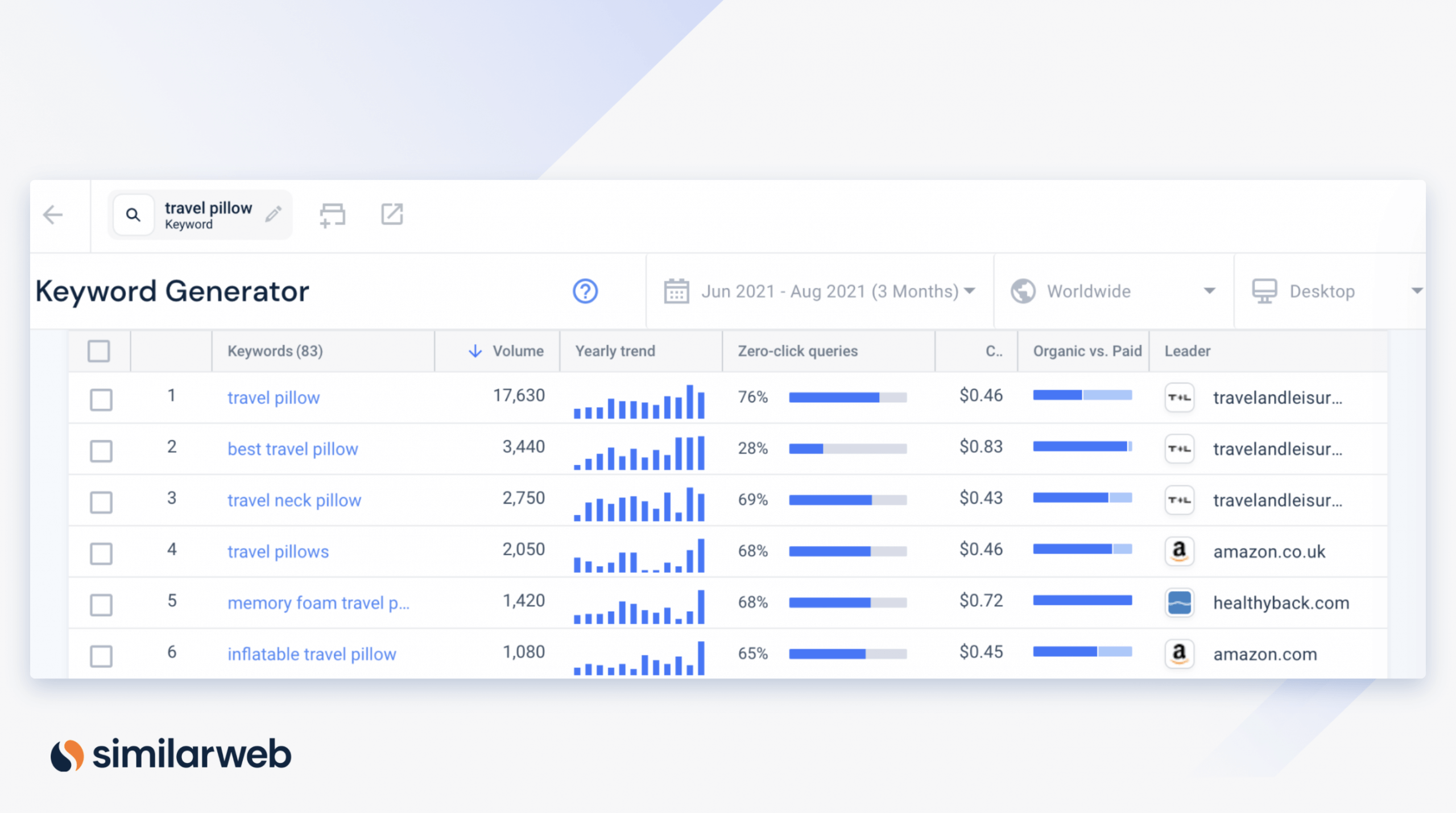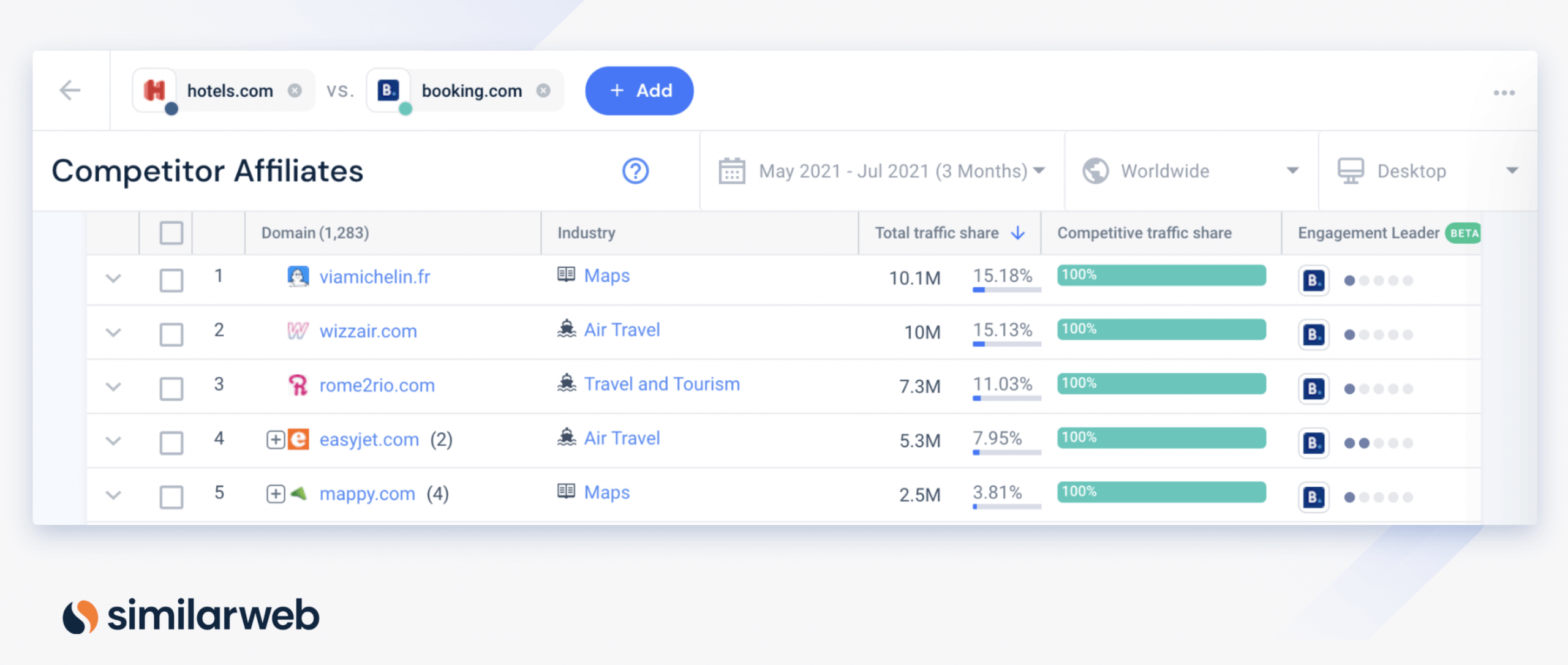SEO for Affiliate Marketing: How to Boost Your Traffic

At its most fundamental level, marketing is about traffic. With U.S. affiliate marketing spending expected to reach $8.2 billion by 2022, it’s no surprise that more businesses are using it, taking advantage of affiliate research to find the best-performing partners.
Without making changes to profit margins or product development, the only ways to increase your revenue are to attract more potential customers or better quality prospects, i.e. those with a higher chance of making a purchase.
To that end, both search engine optimization (SEO) and affiliate marketing work towards the same goal: driving more high-quality traffic to your website to lift conversions, sales, and revenue.
The similarities don’t stop there: both strategies can be complex and difficult to manage. SEO and affiliate marketing take time to implement and show results slowly, so you need the highest-impact techniques to optimize your efforts and maximize your returns.
Not only are these strategies similar, but when used together as SEO affiliate marketing, you can gain dual advantages: traffic quantity and volume.
Let’s explore exactly how to get the best returns.
What is SEO affiliate marketing?
SEO alone is widely used by companies seeking a higher ranking in search engine results pages (SERPs). As part of an inbound marketing campaign, SEO can help you deliver valuable content to your audience based on search volume. That content aims to bring them into your marketing funnel via genuinely useful information that builds affinity with, and awareness of your brand.
Affiliate marketing programs, on the other hand, can be a cost-effective way of attracting warm leads that drive profits for your business at a greater return on investment (ROI) than many other strategies. By connecting with affiliate partners who deliver prospects via affiliate links, these programs offer payments either per sale, based on click-through rate (CTR), or per lead generated. Partners promote affiliate marketers’ products or services via their own marketing campaigns, social media posts, tutorials, blog sites, email campaigns, affiliate sites, or videos.
SEO affiliate marketing is a combination of the two techniques and involves adding product links to your optimized content to lift your profile and deliver higher conversions. The combined approach delivers the benefits of both strategies and ensures they are working hand in hand to increase your revenue, rather than competing with one another. While the affiliate SEO activity helps lift the visibility of your brand and products, the attached affiliate marketing campaign converts that visibility into prospects, sales, and profit.
Pro Tip: When applied to the right products that attract a high volume of search traffic and a good commission on each sale, SEO affiliate marketing can produce powerful results.
How do you conduct SEO affiliate marketing effectively?
As with any long-term campaign, an effective affiliate SEO strategy requires several steps to ensure you’re making the most of your time and resources. Executing this correctly now will help you reap the rewards of your efforts later.
There are four main steps to think about:
1. Find the right product in your niche
To get your SEO and affiliate marketing campaigns working together harmoniously, make sure both strategies are carefully targeted and refined. There’s no point identifying specific targets for your affiliate partners if you’re trying to push products in too many different categories.
Focus on one or two products within your particular niche (like skincare creams for women 18-24). This niche should be selected primarily based on profitability and data-driven research that identifies your likely ROI. Of course, it’s also important that the chosen niche is something you feel able to contribute to and engage with over the long-term and that fits your brand. But if there’s no money to be made, you’re stuck before you even begin.
When scoping out possible niches, look at the affiliate partners currently operating there – explore their web traffic channels, top keywords, paid activities, audience and engagement metrics. That way, you get a sense of how popular and profitable that particular niche could be for you, and start to narrow down which product or set of products to promote. Again, taking the time to identify the best target at this stage will pay off in the future.
2. Uncover keywords that can drive traffic to your website
Next, carry out thorough keyword research to find the best approach to deliver the biggest increase in traffic to your website. Detailed keyword planning done now means you’ll hit the ground running further down the line, and you can even look at competitors’ top-performing keywords to see where to target your own strategy. Using Similarweb Platform, identify the kind of searches your audience might be making and generate appropriate keyword ideas.
If you sell face creams, for example, you might target searches for the problems they solve (like. ‘skin problems’), as well as for the type of product itself.
Similarweb’s keyword research tool gives you a comprehensive data set of metrics including volume, zero-clicks, an analysis of organic vs. paid, the biggest competitors on SERPs, cost per click (CPC) and more, to help you make informed decisions about how to steer your campaign.
You can generate new keyword ideas to add to your list and benchmark your results against your industry, giving you tangible measures to guide your choices.
3. Optimize your page for more online conversions
Both affiliate marketing and SEO are all about traffic: bringing in a high volume of visitors to your affiliate website in order to increase sign-ups, sales, and bookings. That means the investment you’re making is at the top of the funnel. But what happens once those visitors arrive?
A high click-through rate only gets you so far. What you really need is for those clicks to convert into sales and revenue. This means optimizing your landing pages and content to achieve the highest conversion rate possible. With so much content available to grab viewers’ attention, yours needs to be a cut above the rest to ensure they stick around and take that crucial next step.
Your shortlisted keywords are a great starting point for coming up with content ideas. By beginning here, you’ll create material that is of genuine interest to your readers, and which actively addresses their concerns and questions. If those long-tail keywords already have a high search volume in Google search, then there’s a ready-made audience waiting for you to create content optimized just for them.
Think about ways to make all your content – new and existing – more valuable to that audience and you’ll be sure to speed them through the funnel to becoming a customer. The more accurately you can address their questions at the early stage, the more qualified your leads are and the higher your conversion rate will be.
For conversion-focused landing pages, pick a clear action that you want your readers to take and drive them in that direction. That means using prominent call-to-action (CTA) buttons, incorporating active language using imperative nouns and action words, and clearly outlining all available benefits.
Tips to keep in mind:
- Write informative product descriptions and eye-catching subheadings
- Use only high-quality visuals to break up the text
- Don’t be afraid to use bulleted lists (like this one) for skimmers
- Focus on clarity, action, and emotional trigger-points
Pro Tip – Keep testing, trying new formulas, formats, and approaches to keep enhancing and improving your pages. A/B testing is an ideal way of working out which approach is going to have the best return for your website.
4. Build powerful links for affiliate partners
When growing organic traffic, your affiliate links are the final key to a successful affiliate SEO strategy. It’s likely you’re working separately on link-building for your website as part of your digital marketing strategy, so don’t forget to connect this with your affiliate planning. As with your core pages, you can boost your SEO affiliate marketing by securing as many backlinks as possible from sites that are relevant to the products you’re promoting.
A great way to do this is through guest posting, which helps you connect with already-established audiences in your niche. Plus, you’ll get a helpful boost to your domain authority. As always, high-quality content is essential, so make sure you’re creating valuable, relevant articles that speak to the target site’s audience and that answer their questions. Keep your material readable, engaging, and clear.
Outreach link-building and relationship-based link-building can also help broaden your audience. Find a heavily linked content asset and create a superior version, then ask your contacts to add links to it on their own websites in order to build backlinks and grow your SERP ranking.
However you go about doing it, building powerful links will boost your site’s authority and pull in a greater share of traffic.
Finding the right affiliates for your business
You’re only as strong as your weakest affiliate, so finding the right partners for your business is key to a successful campaign. Similarweb’s affiliate tool can help you reveal the best-performing affiliate partners based on traffic share and quality. That way, you can identify potential new opportunities knowing that they have a proven track record at delivering results.
For existing partners, remember that ultimately you’re on the same side, as any traffic they win, you win. So it makes sense to do whatever you can to help them optimize their own efforts.
Learning from the competition
Another effective way to improve your affiliate marketing is simply by studying what your competitors are doing. After all, it’s natural that if someone made better skincare products than you, you’d want to find out exactly how they’re doing it. Affiliate SEO is a long game, and the best programs are constantly reassessing their activities. Run competitive research on a regular basis to find your competitors’ affiliates and get a clearer picture of the surrounding landscape. Identifying your competitors’ strongest affiliate partners can help you hone your strategy with your own partners and potentially even give you ideas for new partners to bring on board.
Equally, if one of your own affiliates significantly outperforms the others, exploring what they’re doing differently can give you useful tips for your program as a whole.
Pro Tip: Finding ways to be more successful across different channels is key to keeping your affiliate program running smoothly and effectively.
Final thoughts and next steps
Similarweb offers tools that can help you achieve higher rankings on SERPs, identify the right affiliates for you, monitor, track and optimize their activities, build pages that convert your incoming traffic based on targeted keyword research, and deliver greater profits on your investment. With these tools in tow, you’ll be able to monitor your affiliate partners and maximize your efforts by concentrating on the top performers.
SEO and affiliate marketing can work powerfully together if you balance your efforts correctly, so make sure to consider every stage of the consumer journey to create and build a program that grows revenue. Once you’ve done that, it’s important to stay on top of your campaigns and constantly tweak, evolve, and optimize your strategy to identify new opportunities.
With the right data, it’s easier to make the best decision for your business.
FAQs
What is SEO affiliate marketing?
SEO affiliate marketing refers to the process of adding product links to your optimized content, resulting in higher conversions.
How do you conduct effective SEO affiliate marketing?
To conduct effective SEO affiliate marketing, find the right product in your niche, use accurate keywords to drive traffic to your site, optimize your page and build strong links for affiliate partners.
Is SEO good for affiliate marketing?
SEO is beneficial for affiliate marketing, as it drives traffic quantity and volume resulting in higher conversions, sales, and revenue.
The #1 keyword research tool
Give it a try or talk to our marketing team — don’t worry, it’s free!














